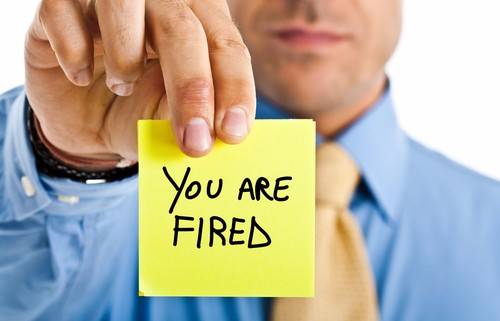Wrongful termination is an unfortunate reality that some employees face, particularly when discrimination plays a role in their dismissal. In California, strong legal protections are in place to safeguard employees against discriminatory practices in the workplace. The Myers Law Group, APC is committed to ensuring justice for individuals who have experienced wrongful termination due to discrimination. In this article, we will explore the legal requirements in California for addressing wrongful termination cases based on discrimination and highlight the key steps to take in seeking justice.
Understanding Wrongful Termination Due to Discrimination
Wrongful termination occurs when an employer unlawfully fires an employee, and discrimination adds another layer of injustice to this scenario. Discrimination can be based on factors such as race, color, national origin, gender, age, religion, disability, sexual orientation, or other protected characteristics. If you believe you were terminated based on any of these grounds, it is essential to familiarize yourself with the legal requirements in California to protect your rights and seek recourse.
California’s Legal Framework: Protecting Employees
California has established robust legal protections for employees to prevent wrongful termination due to discrimination. The primary legislation providing such protection is the Fair Employment and Housing Act (FEHA). Under FEHA, it is illegal for employers to discriminate against employees based on the protected characteristics mentioned earlier. Furthermore, it prohibits employers from retaliating against employees who exercise their rights to report discrimination or participate in related investigations.
Legal Requirements for Filing a Wrongful Termination Lawsuit
To pursue a wrongful termination claim based on discrimination in California, employees must meet certain requirements:
Exhaust Administrative Remedies: Before filing a lawsuit, individuals must first file a complaint with the California Department of Fair Employment and Housing (DFEH). This complaint triggers an administrative investigation into the alleged discrimination and allows the agency to attempt conciliation or mediation between the parties involved.
Obtain Right-to-Sue Notice: Once the DFEH completes its investigation, they may issue a “right-to-sue” notice. This notice gives the individual permission to proceed with a lawsuit against their employer in civil court. Alternatively, if the DFEH decides not to pursue the claim, they will provide the right-to-sue notice directly.
File Lawsuit within Statute of Limitations: Employees must file a lawsuit within the statute of limitations, which is generally one year from the date the right-to-sue notice is issued. It is crucial to adhere to this deadline, as failing to do so may result in the dismissal of the case.
Proving Wrongful Termination Due to Discrimination
To establish a strong case of wrongful termination due to discrimination, several elements must be demonstrated:
Protected Characteristic: The employee must show that they belong to a protected class under California law and were treated unfavorably due to that characteristic.
Adverse Employment Action: It must be proven that the employer took adverse action against the employee, such as termination, demotion, or a significant change in working conditions.
Causal Connection: There should be a clear connection between the adverse action and the protected characteristic. This can be established by demonstrating that similarly situated employees outside the protected class were treated more favorably.
The Legal Process: What to Expect
Once you have engaged the services of an experienced employment attorney, they will guide you through the legal process, ensuring your rights are protected every step of the way. Here’s what you can expect:
Case Evaluation: Your attorney will conduct a thorough evaluation of your case, reviewing all relevant documentation and gathering evidence to support your claims. This may include employment records, emails, witness statements, and any other pertinent information.
Preparing a Complaint: Your attorney will draft a complaint outlining the details of your wrongful termination claim, including the discrimination you experienced and the damages you suffered as a result. The complaint will be filed with the appropriate court, initiating the legal proceedings.
Discovery Phase: During the discovery phase, both parties exchange relevant information and evidence. This may involve written interrogatories, document requests, depositions, and other forms of gathering evidence. Your attorney will help you navigate this process and ensure that your rights are protected.
Mediation and Settlement: In many cases, mediation is a viable option to resolve the dispute without going to trial. A neutral third party, the mediator, facilitates negotiations between you and your former employer. Your attorney will advocate for your best interests and help you assess settlement offers to determine whether they provide fair compensation for your losses.
Litigation and Trial: If settlement negotiations fail, your case may proceed to trial. Your attorney will prepare a strong legal strategy, present evidence, call witnesses, and argue your case in court. They will fight to prove that you were wrongfully terminated due to discrimination and seek the appropriate remedies on your behalf.
Potential Remedies and Damages
When a wrongful termination claim based on discrimination is successful, individuals may be entitled to various remedies and damages, including:
Reinstatement: In some cases, the court may order the employer to reinstate the wrongfully terminated employee to their previous position or a comparable one.
Compensatory Damages: These damages aim to compensate the employee for the financial and emotional harm caused by the wrongful termination. They may include lost wages, benefits, and compensation for emotional distress, pain, and suffering.
Punitive Damages: In situations where the employer’s conduct is particularly egregious or malicious, the court may award punitive damages to punish the employer and deter future misconduct.
Attorney’s Fees and Costs: If you prevail in your case, the court may order the employer to reimburse your attorney’s fees and other litigation costs.
If you have experienced wrongful termination due to discrimination in California, The Myers Law Group, APC is here to help. Our team of experienced employment attorneys specializes in fighting for justice and protecting the rights of employees. We understand the complexities of California’s employment laws and are dedicated to providing personalized legal representation to each client.
Don’t let discrimination go unchallenged. Contact us today to schedule a consultation and take the first step towards reclaiming your rights. Together, we can seek justice and promote equality in the workplace.
Wrongful termination due to discrimination is an unacceptable practice that goes against California’s strong commitment to equal employment opportunities. Understanding the legal requirements and seeking professional legal counsel is essential for individuals who have experienced such injustice. The Myers Law Group, APC stands ready to advocate for employees who have been wrongfully terminated due to discrimination and to fight for their rights under California law. Remember, you are not alone, and justice can be pursued.
